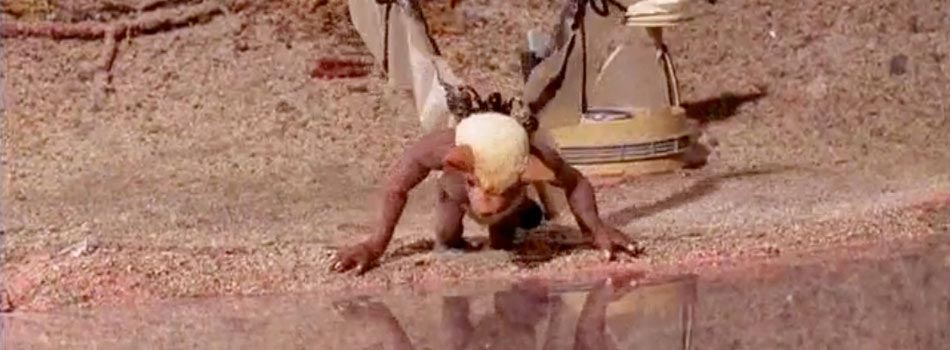The Worlds of Hyperhelion
The main characters in Hyperhelion are:
Deh'ma Jow'say, from Jal'ray and
Speen Relco, from Lethka.
The worlds of these very different characters:
Planet Jal'ray and Planet Lethka
The planet Jal'ray is the homeworld of the Chiropterans, Deh'ma's people. This once-thriving world suffered complete ecological collapse due to the greed and mismanagement of the powerful elite and the apathy of the majority of the populace. Luckily, a few foresaw the coming catastrophe and built the biospheres to preserve diverse species in order to eventually restore Jal'ray's environment.
The Chiropteran race evolved on Jal'ray, a small planet located 15 000 light years from galactic centre.
Chiropterans are the result of genetic experiments carried out by an ancient race that visited Earth during prehistoric times. They took samples of a number of different species during the Eocene period, including bats, and transported them to other worlds in the galaxy. During the long voyages, various experiments were carried out to transform each species into a new organism capable of using basic "hands-on" technology. The Chiropterans were one of the successful experiments. Their brains were modified to allow them to use simple tools until a suitable world was found to place them. Once deposited, with enough of them to supply a diverse gene pool, they reproduced and used the technology left them to protect themselves and build a new society.
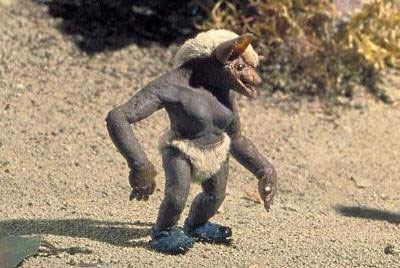
Chiropterans are a humanoid species with short legs, broad shoulders and long arms, derived from their bat ancestors. They have large ears which allow them to hear extremely well. Their light weight and the musculature of their upper bodies allows them to fly in Jal'ray's low gravity using artificial wings called Pterastraps.
Chiropterans are a social species, living in groups, and subsist on a diet of fruit and the large insects native to Jal'ray.
For thousands of years after the creation of the Chiropteran species, their small numbers expanded, formed cultures and built cities. However, they eventually reached a point where a powerful few took control and wreaked havoc upon the planet. Some foresaw the catastrophe and with the aid of a sector of the society sympathetic to their concerns, they constructed space arks to house species even while fighting to conserve species diversity on the planet below. Greed reigned, war ensued and millions died in the chaos.
Conflict
More than a century ago, Jal'ray was under massive stress. Growth economics ruled the day. There was no thought given to the long term - technology was based solely upon maximising short term gain. With the discovery of nuclear fusion promising almost endless supplies of energy, fossil fuels were phased out. However, production was then able to sharply increase, stressing the carrying capacity for physical waste and strip mining the surface for materials to sustain a highly industrialised life style.
The search for metals, minerals and raw material for plastics was leaving no wild area untouched. All ways of life were subsumed to the desire for the ultimate convenient lifestyle. Almost all wild areas were completely tamed. Flora and fauna ceased to exist unmanaged. Enormous farms produced limited strains of plant food that fed an even more limited variety of insects upon which the Chiropterans depended for food. Oceans, forests, prairies and jungles were all farmed, mined or clear-cut to make food and supplies for the growing billions. Many cried out against the trend, including those who lived in the remaining wild areas, living as their ancestors had. They blockaded the clearing of wilderness, trying to appeal to their brethren to experience life amongst diversity. Of those that heard them, only a few could respond. So many had been so used to life within the large, sterile cities that life in wild areas was unthinkable; they were afraid.
The media made certain that those who favoured a natural lifestyle were ridiculed and despised. "Is there not ample space to live?" asked the pundits. "Do they want to starve us?" They were seen as threatening the modern, civilised way of life. The masses who were struggling to live day to day saw it as the inevitable pinnacle of civilization.
Ecological Collapse
Then a blight hit. The genetic wonder of advanced agriculture could not respond to the disease. Some even wondered if the disease was a result of inter-species gene splicing: the time bomb that the engineering skeptics had warned about. The lack of plant diversity meant that the entire crop-base failed. With no food to feed the insects, it was only a matter of time before they were all eaten and no more could be produced. The small, shrimp-like Sneloc was at the base of the insect food chain and converted the plant crops into protein. Its numbers dwindled as the food could no longer be grown. Scientists scrambled madly but the time frame was too short to discover a solution. Political instability grew as food shortages forced a greedy society to ever more desperate and dispicable acts to survive. Other damage, ranging from organic and inorganic pollutants to global warming and fallout from the wars added to the ecological collapse. In the end, Jal'ray's was a wasteland, barely able to support life, the few Chiropterans remaining on the planet left to scrabble for their very existence.
The Biospheres
The self-sufficient settlements off-planet on the moons or Biospheres were spared. They could only watch helplessly and offer what food help they could. Soon they became the targets of raids by government and corporate spacecraft, coming to plunder their food stores - food that was to end up only in the hands of those who could pay for it. Many Biospheres fled into other areas of the solar system, hiding when increasingly violent ships came hunting for more. On the planet below, millions faced starvation and disease. The Biospheres offered aid in the form of food and genetically diverse livestock, but the corporate powers, fearing a loss of control over production and distribution, refused to cooperate. When the Biospheres attempted to distribute aid directly to the populace, they were shot out of the sky. Under attack from all quarters, the inhabitants of the Biospheres sent colonists to the few nearby, lifeless star systems which could support them to create new Biospheres beyond the reach of the raiders. Each Biosphere was given the task of establishing another of similar size or several smaller ones that could eventually be integrated together.
Rebirth
A year after the raids finally ended, scouting parties from the surviving Biospheres returned to Jal'ray's orbit to observe the damage. They decided that their only hope of rebuilding their species and societies was to build more Biospheres that eventually could reintroduce life to the surface - the more Biospheres, the greater potential for genetic diversity. Many plants, animals and other organisms were stored in statis as seeds, eggs and spores, until they could be reintroduced into Jal'ray's ecosystem. Once they were returned to the planet, the blight that had taken the crops could not affect all of the strains.
Our story takes place 120 Earth years after the catastrophe that ended life on Jal'ray. Biosphere Nao'sin is relatively new, an offshoot of Biosphere Kon'doy, in the Fornath system. Deh'ma and her organization, Plethora, have been assigned to Nao'sin as part of the expansion. Nao'sin had just been set up when the distress call came, and the full crew had not been assigned - only Deh'ma and three others were aboard. The distress call was short, giving no real details, and was cut off in mid-sentence. The group decided that three of their number should go, and Deh'ma would remain with the computer to watch over the fledgling Biosphere.
Before the blight which led to the ecological collapse of Jal'ray, the planet was a beautiful place.
Sketches of the planet showing some of its flora and fauna:
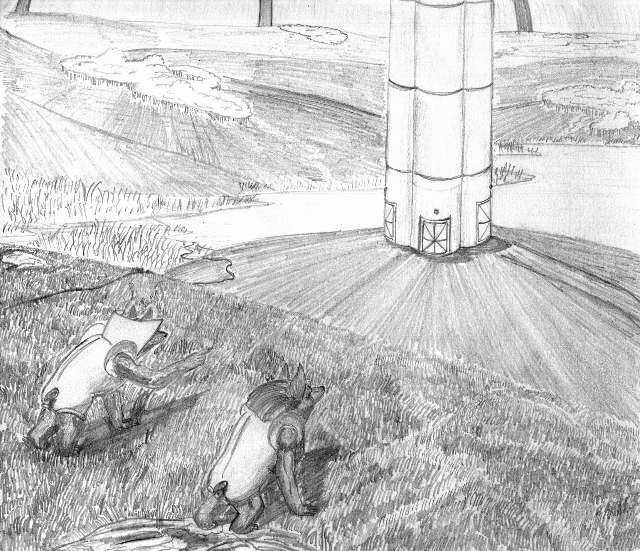
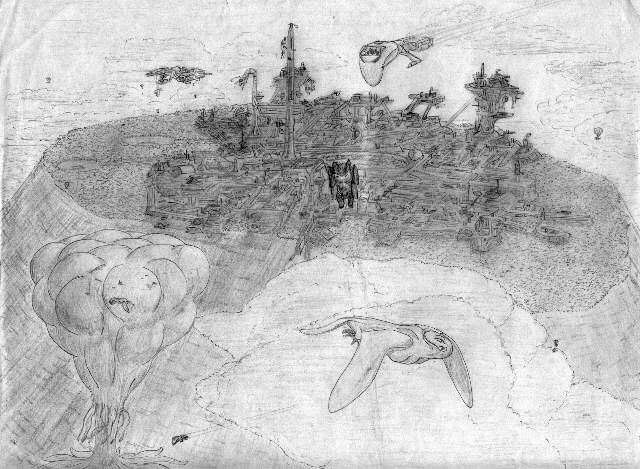
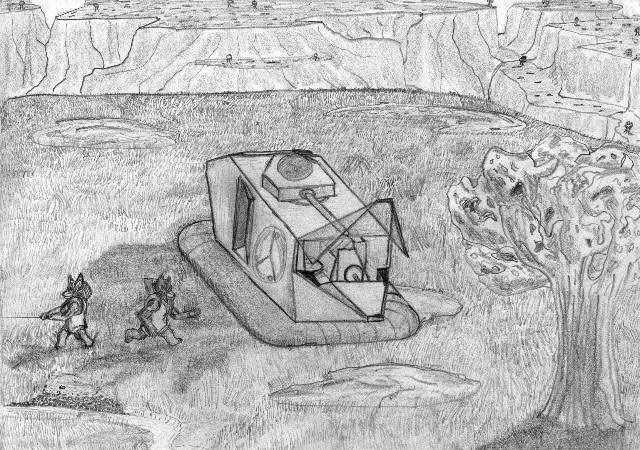

The planet Lethka, a human-inhabited world, is home to Solthka Mining Corporation, the company for which Speen Relco and Rayd Wat Sinn work. Due to the habits of corporations like Solthka Mining Corporation and the policies of the government which caters to them, Lethka is well on its way to the same sort of environmental catastrophe that befell Jal'ray. Much of the planet's resources have been depleted, and the sun is only dimly seen through a curtain of smog. Delsinth City is the capital of Planet Lethka and home to Solthka Mining Corporation's main offices.
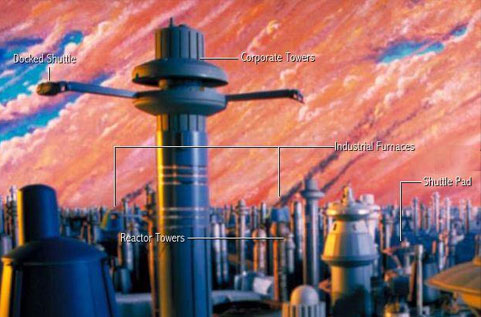
Delsinth City is the capital and showplace of the Planet Lethka. It is famous for its tall towers and its skies which glow with the light of industry. Many of Lethka's great corporations have their headquarters in Delsinth City, including Solthka Corporation.

Delsinth City, as seen from the corporate offices of Solthka Mining Corporation.
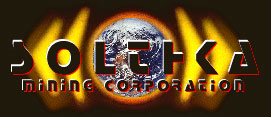
The Solthka Mining Corporation is Lethka's premiere resource development and exploitation concern. SMC supplies nearly half of the platinum used by the Lethkan corporate space fleets. SMC reported a record profit of nine hundred million credits last year, ranking it fourth on the Planetary Stock Exchange. This is the sixth straight record-making year for SMC, and current projections indicate that this trend will continue.
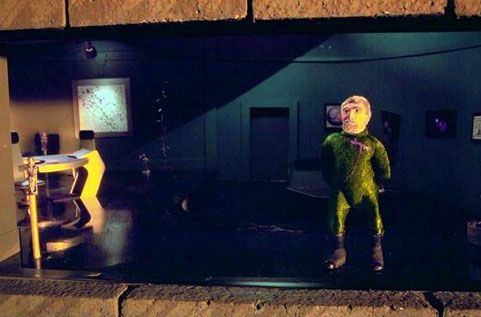
Solthka Mining Corporation's Resource Acquisition Division, with its fleet of Kroyla Mk. III prospecting ships and massive asteroid mining platforms, can extract all the usable recources from a star system in a very short period of time. The Resource Acquistion Division is headed up by Rayd Wat Syn who, sources say, is in line for a Vice-Presidency if his current project is as successful as projected. Expoitation of the P-942 system has just begun under his direction, with a number of high-grade platinum-bearing asteroids being mined.
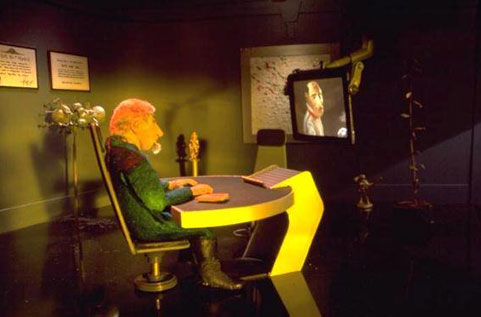
Typical executive office for a Division Director.

